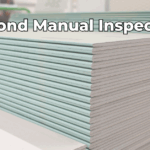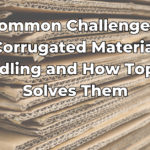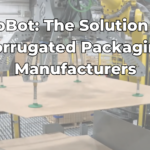In the building materials industry, quality control for gypsum board production has traditionally relied on human inspectors scanning for surface imperfections. This approach, while standard for decades, has significant limitations that affect both production efficiency and product quality. Machine vision technology is transforming this process, offering automated solutions that surpass the capabilities of manual inspection.
The $21 billion gypsum board market demands stringent quality standards while manufacturers face pressure to boost production speeds. This tension makes traditional inspection methods problematic for modern manufacturing facilities.
The Limitations of Traditional Manual Inspection
Human Error and Inconsistency
Manual inspection of gypsum board surfaces depends heavily on individual inspectors’ attention spans, visual acuity and judgment. Human inspectors inevitably experience fatigue during long shifts, reducing their effectiveness at spotting subtle defects. Studies show that visual inspection accuracy can drop by up to 30% after four consecutive hours of inspection work.
Manufacturing facilities operating multiple shifts face additional challenges with inspector variability. What one shift identifies as defective might pass quality control during another shift, creating inconsistent product standards.
Speed Constraints
Human inspectors can only assess a limited number of boards per hour, creating a bottleneck in high-volume production environments. As manufacturing speeds increase to meet market demands, manual inspection becomes inadequate.
The typical inspector can visually scan approximately 25-30 square feet of board surface per minute with reasonable accuracy. Modern production lines, however, can produce 10-15 times that volume, forcing manufacturers to choose between slowing production or accepting reduced inspection coverage. For example, most gypsum lines run between 200 and 700 feet per minute. This means a worker would have to inspect 800-2800 sq ft per minute based on 4ft wide board to keep up, which is nearly impossible.
Subjective Evaluations
Without quantifiable standards, different inspectors may classify the same imperfection differently. This subjectivity leads to inconsistent quality assessments and potentially allows defective products to reach customers.
Documentation of defects also suffers from subjectivity, making it difficult to establish clear trending data on production issues or track quality improvements over time.
Machine Vision: The Automated Alternative
Consistent Detection Parameters
Machine vision systems apply the same detection criteria to every board that passes through the production line. The Surface Inspection System developed by 20/20 Robotics exemplifies this consistency, using AI technology that maintains uniform standards throughout production runs, regardless of time of day or production volume.
These systems can inspect hundreds of boards per hour without variation in detection sensitivity, eliminating the human factors that lead to inconsistent quality control decisions.
Comprehensive Coverage
While human inspectors must divide their attention across the entire board surface, machine vision cameras can simultaneously monitor multiple areas with precision. This comprehensive coverage substantially reduces the likelihood of missed defects.
Modern systems employ multiple high-resolution cameras that can detect surface variations of ¼” to ½” across the entire width and length of each board, achieving 100% surface inspection at production speeds of up to 700 feet per minute.
Data-Driven Quality Improvement
Advanced machine vision systems do more than just detect defects; they collect data that can be analyzed to identify patterns in production issues. This information allows manufacturers to address root causes rather than simply rejecting defective boards.
The systems can track defect types, locations, frequencies and correlations with production variables such as raw material batches, ambient conditions or specific equipment settings – creating actionable intelligence for process improvement.
Real-World Applications in Gypsum Board Production
Surface Defect Detection
Machine vision excels at identifying common gypsum board defects including:
- Paper tears and blisters
- Cockles
- Line in the Face
- Edge damage
- Dimensional irregularities
- Burn Marks
- Discoloration
- Foreign material contamination
Inline Integration
Modern vision systems integrate directly into existing production lines, providing real-time feedback without slowing production. When the system detects a defect, it can trigger immediate responses such as marking the board for removal or automatically rejecting it from the line.
This real-time capability prevents defective boards from moving further into the production process, eliminating wasted effort on products that will ultimately fail quality standards.
Quantifiable Quality Standards
With machine vision, quality becomes measurable rather than subjective. Systems can detect imperfections as small as ¼” to ½” and categorize them based on severity, location and type – creating standardized quality metrics previously impossible with manual inspection.
These quantifiable standards enable manufacturers to establish precise acceptance criteria, moving quality control from art to science with documented specifications that satisfy even the most demanding customers.
The Business Case for Automated Inspection
Reduced Labor Costs
Automating inspection allows manufacturers to reallocate human resources to higher-value activities. While machine vision requires initial investment, the reduction in labor costs often delivers ROI within 12-18 months.
A single automated inspection system can replace one quality control positions per shift, significantly reducing annual labor expenses while improving inspection consistency and coverage.
Decreased Waste
By catching defects earlier in the production process, manufacturers can reduce waste and rework expenses. Early detection prevents value-added processing on products that will ultimately be rejected.
Higher Customer Satisfaction
Delivering consistently higher-quality gypsum board results in fewer customer complaints and returns, building stronger market relationships and brand reputation.
Construction contractors and installers particularly value consistency – boards with the same dimensions, edge quality and surface finish – which machine vision systems excel at verifying.
Implementation Considerations
Training the AI System
As noted in 20/20 Robotics’ materials, their Surface Inspection System system allows users to “train a camera just like you would train a human to distinguish between good and bad.” This training phase is essential to calibrate the system to recognize specific defects relevant to gypsum board production.
The AI learning process typically involves capturing hundreds of images of both acceptable and defective boards, allowing the system to develop accurate detection algorithms specific to each manufacturer’s products and quality standards.
Lighting and Imaging Setup
Proper lighting represents a fundamental component of effective machine vision. 20/20 Robotics employs “advanced lighting techniques” in their Surface Inspection System system, demonstrating how specialized illumination helps reveal surface irregularities that might otherwise go undetected.
For gypsum board inspection, specialized lighting often includes a combination of bright and dark field lighting techniques that highlight different types of surface imperfections, from major defects to subtle variations in texture.
Integration with Production Controls
For maximum benefit, vision systems should communicate directly with production line PLCs, allowing automatic responses to detected defects. This integration minimizes human intervention requirements while maximizing production efficiency.
Looking Ahead: The Future of Gypsum Board Quality Control
The building materials industry continues to embrace automation technologies that improve both quality and efficiency. As AI capabilities advance, next-generation machine vision systems will offer more sophisticated detection algorithms and predictive maintenance capabilities.
By implementing machine vision technology for gypsum board inspection, manufacturers position themselves at the forefront of quality control automation. The transition from manual to automated inspection represents not just an incremental improvement but a fundamental shift in how building material quality is managed and assured.
Take the Next Step Toward Automated Quality Control
20/20 Robotics specializes in the integration of advanced robotics and machine vision technologies to create powerful, intelligent automation systems for the building materials industry. Our team develops customized solutions that address the unique challenges faced by manufacturers.
Ready to transform your gypsum board quality control process? Contact 20/20 Robotics today to discuss how our machine vision solutions can improve your production quality and efficiency.
Frequently Asked Questions
How much does a machine vision system for gypsum board inspection cost?
Machine vision system costs vary based on complexity, coverage area and integration requirements. Basic systems start around $50,000, while comprehensive, plant-wide solutions may reach $350,000 or more. However, most facilities achieve return on investment within 12-18 months through reduced labor costs, quality improvements, and reduced callbacks.
Can machine vision systems be added to existing production lines?
Yes, modern machine vision systems like those offered by 20/20 Robotics are designed for retrofitting to existing production lines. The integration process typically requires minimal downtime and can be performed during scheduled maintenance periods.
How accurate are machine vision systems compared to human inspectors?
Machine vision systems consistently achieve 95-99% detection rates for visible defects, compared to 80-85% for human inspectors. Additionally, machine vision maintains this accuracy level throughout production runs, while human accuracy decreases over time due to fatigue.
What maintenance do machine vision systems require?
Maintenance requirements are relatively minimal, including regular lens cleaning, occasional software updates and periodic calibration checks. Most systems include self-diagnostic capabilities that alert operators to potential issues before they affect performance.
How long does it take to implement a machine vision system for gypsum board inspection?
From initial consultation to full implementation, the process typically takes 8-12 weeks. This includes system design, installation, integration with existing controls, operator training and fine-tuning the detection algorithms for your specific products. For more sophisticated machinery it can be 12-16 weeks.






